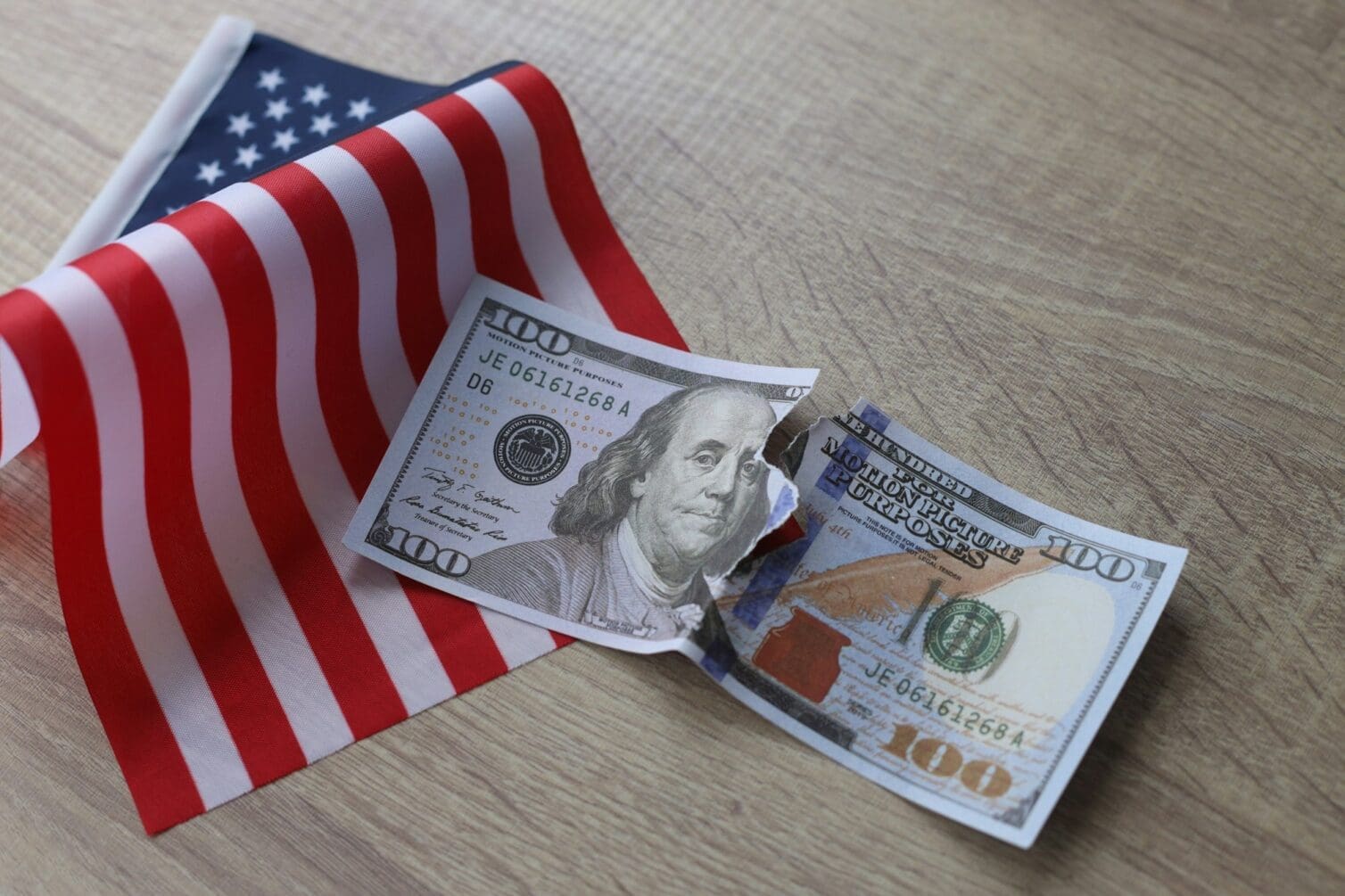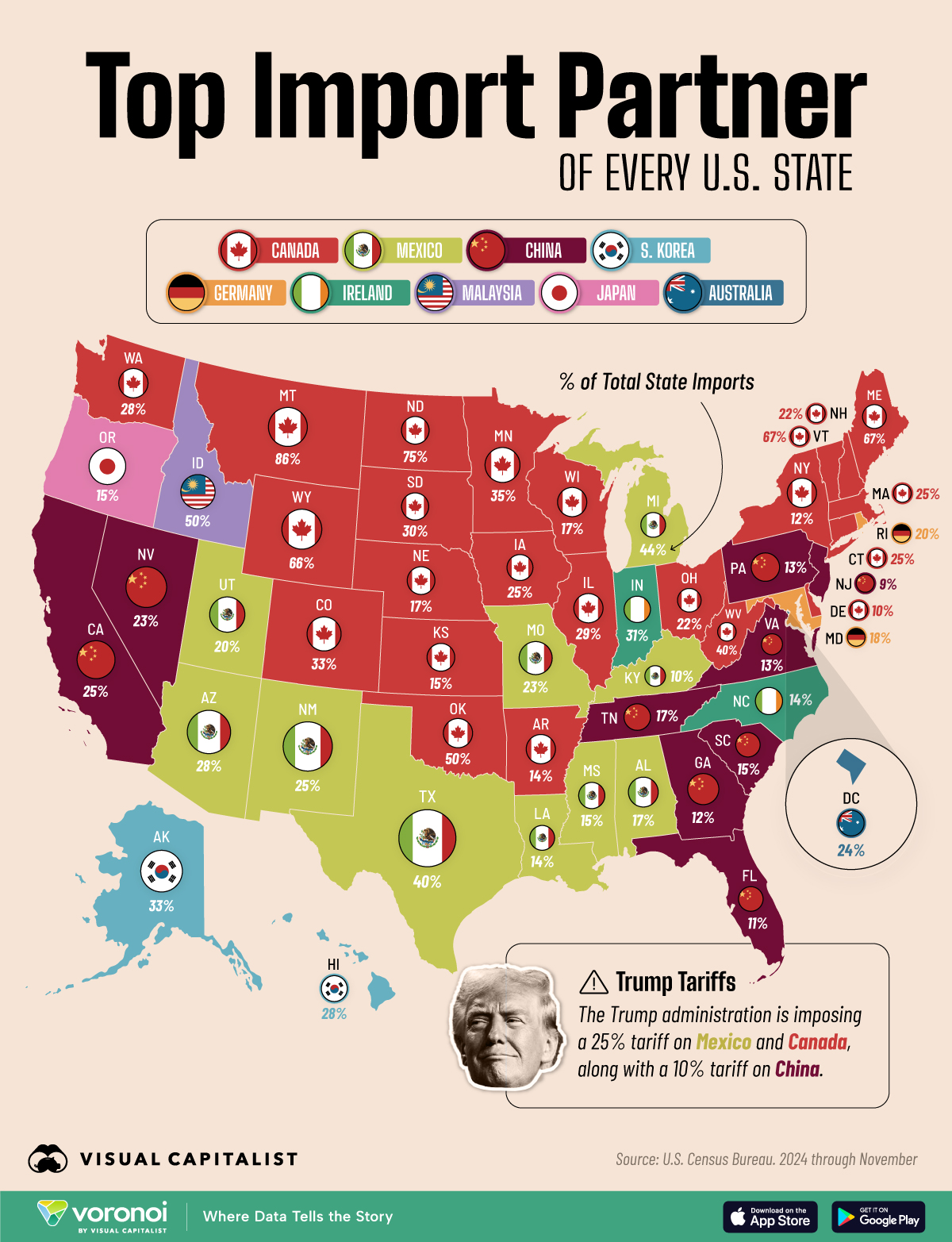Introduction
Canada is the top import partner for 23 U.S. states (see list below) and this infographic from VisualCapitalist identifies those states as of November 2024. The data is sourced from the U.S. Census Bureau.
Top Importers of Canadian Goods By American States
- Montana: 86%
- North Dakota: 75%
- Maine: 67%
- Vermont: 67%
- Wyoming: 66%
- Oklahoma: 50%
Another 5 states import in excess of 25% of goods from Canada, namely:
- West Virginia: 40%
- Minnesota: 35%
- South Dakota: 30%
- Illinois: 29%
- Washington: 28%
6 states import 20-25% of their goods from Canada, namely:
- Colorado: 25%
- Connecticut: 25%
- Iowa: 25%
- Massachusetts: 25%
- New Hampshire: 22%
- Ohio: 22%
If the U.S. 25% tariff (i.e. import duties) on Canadian imports (except oil at 10%) does go into affect on March 4th, as scheduled, the 17 states mentioned above will be the hardest hit. The increased cost of the Canadian imports will result in the imported goods going up in price to the extent that the 25% duties are not absorbed by the importer. So much for Donnie’s campaign promise that, if elected, he would reduce the price of groceries, in particular, and the cost of living for the average American, in general!
The Canadian Response
Things only get worse for Americans! On top of those broken promises, Americans in those states, indeed in all 51 states, will face 25% tariffs from Canada:
- initially on products such as orange juice, peanut butter, wine, spirits, beer, coffee, appliances, apparel, footwear, motorcycles, cosmetics, and pulp and paper products;
- followed up with tariffs on an additional list of imported U.S. goods which will include products such as passenger vehicles and trucks, including electric vehicles, steel and aluminum products, certain fruits and vegetables, aerospace products, beef, pork, dairy, trucks and buses, recreational vehicles, and recreational boats;
- and, in addition to this initial response, the Canadian government has reiterated that all options remain on the table as the government considers additional measures, including non-tariff options, should the U.S. continue to apply unjustified tariffs on Canada.




















